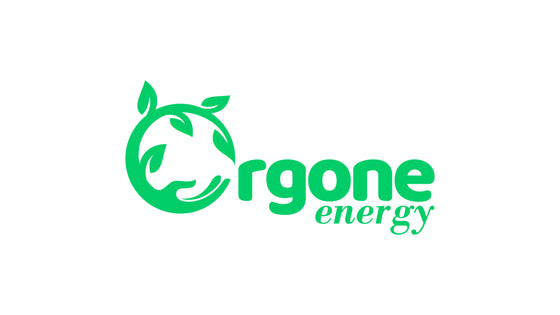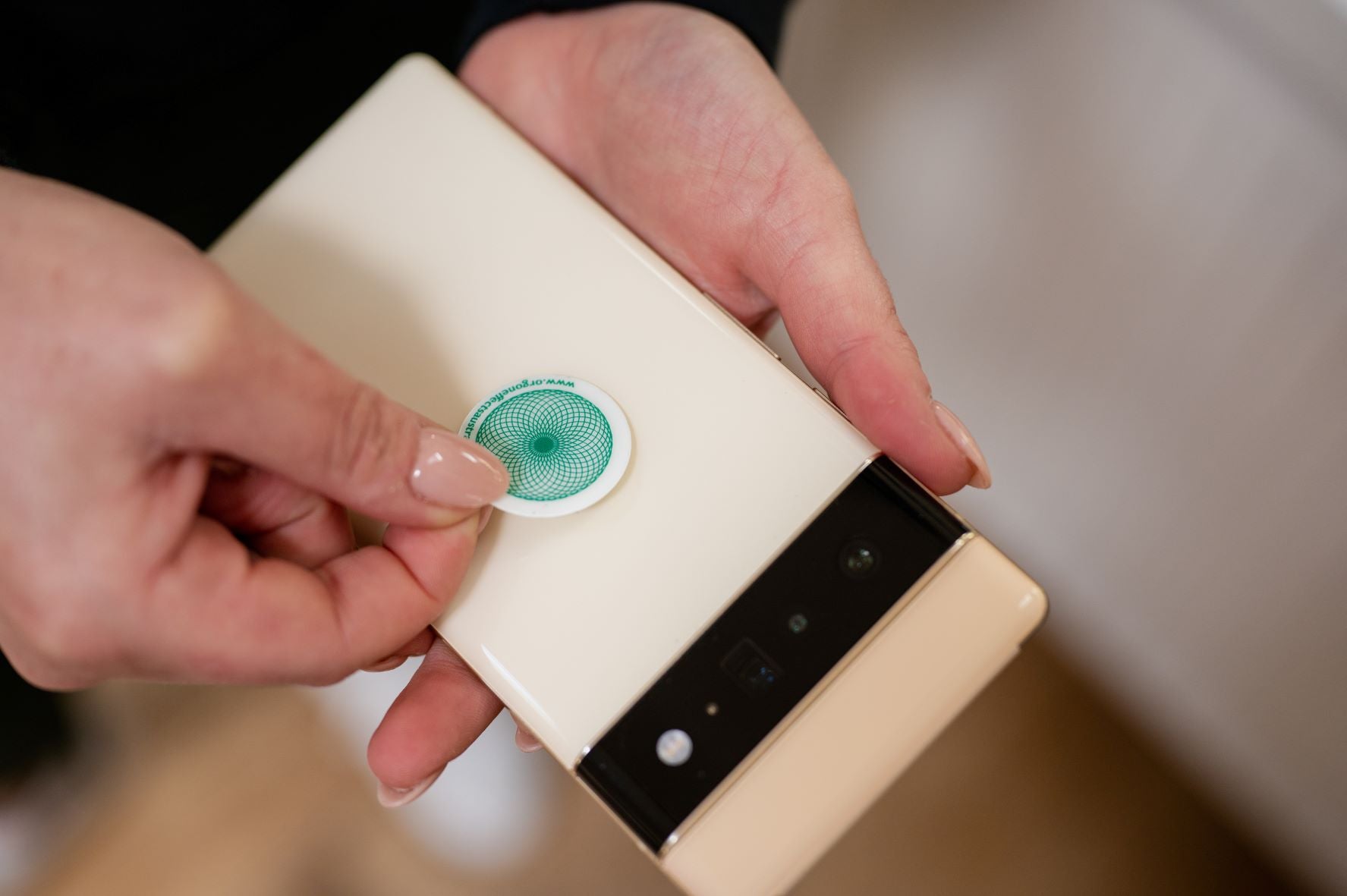Check out everything you need to know about RF exposure including our RF calculator!
Cell towers, Wi-Fi, even your phone: are you getting zapped by radiofrequency (RF)? While RF exposure is unavoidable in our modern world, understanding and managing it is crucial for staying safe and healthy, especially in industrial settings or around RF-emitting equipment.
What is RF?

Radiofrequency (RF): The Power Behind Your Wireless World
Imagine waves of invisible energy carrying information – that's radiofrequency (RF). It's a part of the electromagnetic spectrum, like light and X-rays, but at a lower frequency.
Think of it like this:
- Electromagnetic spectrum: A range of energy waves, including RF.
- RF frequency: Measured in Hertz (Hz), how often the wave completes a cycle (30 Hz to 300 GHz for RF).
- RF power: The amount of energy an RF source can transmit.
How it works:
- Electronic devices (transmitters) create RF waves.
- These waves travel through antennas.
- Other antennas (receivers) pick up these waves, allowing communication (like radio or cell phones).
In simpler terms, RF power is the invisible energy that makes wireless technology possible.
Why is Radiofrequency Power Important?

We use RF power in virtually every area of our daily lives. For instance, RF power enables you to receive the morning news, send messages via your cell phone, and connect to the Internet, among other functions. The most common uses of RF power include:
Communication:

RF power is used in nearly all communication devices, including cell phones, computers, televisions, receivers and transmitters. Additionally, it is used in carrier current systems, including control circuits and telecommunications transmission systems.
Most wireless devices, like cell phones, use tiny circuits called MOSFETs (short for metal oxide semiconductor field effect transistors) to work. This technology is what allows these devices to keep getting smaller and more powerful.
Medical Applications:

RF power has been employed in medical applications for more than 75 years. The most renowned application of radiofrequency power in medicine is MRI (Magnetic Resonance Imaging). However, there are numerous other areas in this field where radiofrequency is used. These applications include hyperthermia, cosmetic therapy, diathermy, cauterization, tissue ablation, and cutting with increased RF power.
RF Cooking:
RF cooking, also known as solid-state cooking, uses powerful radio waves to heat your food. Instead of a hot coil like a traditional oven, it uses radio waves inside a sealed chamber to cook your food precisely. This allows for more even and controlled heating.
RF cooking is a relatively new technology and isn't yet as widely used as microwaves or conventional ovens. However, it's gaining traction in some areas, particularly in commercial settings. Here are some examples of where you might encounter RF cooking:
- Commercial Kitchens: Some high-end restaurants are starting to use RF ovens because they offer several advantages over traditional methods. They can cook food more quickly and evenly, while also helping to preserve moisture and texture.
- Fast Food Industry: RF technology could potentially be used to speed up cooking times in fast food restaurants, leading to faster service.
- Thawing Frozen Food: RF technology might be used to thaw frozen food more efficiently and safely than traditional methods like microwaving or leaving it at room temperature.
It's important to note that RF cooking appliances for home use are not yet widely available.
Radar Systems:

Radar systems are like super-powered flashlights that use radio waves instead of light. These radio waves can range from what an FM radio uses (around 300 MHz) all the way up to very high frequencies (15 GHz). By bouncing these waves off objects like airplanes, ships, and even rain, radar can tell how far away they are and in which direction they're moving.
This makes radar super useful for things like airplane navigation, keeping track of ships at sea, helping with national defense, and even predicting the weather.
Why is Radiofrequency Radiation Dangerous?

\
High RF exposures can heat human tissue in the same way that microwaves cook our food. This “thermal effect” can cause permanent damage to tissue, including the eyes, and can lead to cataracts and negative effects on cognitive health.
Direct physical contact with the antennas can also result in electric shock and skin burns. High radiofrequency exposures are hazardous for the following reasons:
- RF radiation is difficult to detect – it’s invisible, tasteless, and odorless
- Once workers experience symptoms such as overheating or skin flushing, they are already overexposed to RF radiation.
- Levels may begin low when at the onset of work and suddenly spike without warning
- RF radiation can disrupt medical devices like pacemakers, and there are apprehensions regarding potential non-thermal effects, such as psychological injuries and nerve damage.
Antennas installed on roofs and buildings can expose nearby workers to high RF radiation levels. Many antennas are concealed or disguised; a practice referred to as “stealthing.” With this in mind, what can employers and construction workers do to protect themselves?
How Do You Limit RF Exposure?

Although there are presently no regulations on RF exposure, several organizations have published recommended exposure levels and best practices.
Exposure levels vary depending on various factors, but as a minimum precaution, workers should maintain a distance of six feet from a single antenna or ten feet from a group of antennas. Employers should also ensure that antennas near or in adjacent buildings are not directed toward the work area.
When working on sides of buildings or roofs where antennas might be present or nearby, workers should conduct their visual assessment and seek further information from a supervisor. Property managers and building owners need to have information about whether antennas are present, where they are located, and the level of RF radiation.
Employers need to ensure that workers who may be exposed to radiofrequency radiation have a healthy and safe work environment.
Therefore, employers engaged in this type of work need to have a comprehensive plan in place to prevent overexposure. The following are the key elements of this plan, which are adapted from the Institute of Electrical and Electronics Engineers’ Recommended Practices for Radio Frequency Safety Programs, 3 kHz to 300 GHz (C95.7 - 2014).
- Mitigate hazards through engineering controls (e.g., physical barriers like guardrails or shielding the radiation source) and administrative controls (e.g., safe work practices, signage, controlling the power source).
- Identify hazards using exposure assessments or an inventory of RF sources provided to you by the building owner.
- Train employees to be aware of the hazard, including incident response procedures and RF exposure limits.
- Maintain administrative components that include a written policy, a medical surveillance program, and a safety committee with employee participation.
- As a last resort, provide personal protective equipment (PPE) and ensure it is used properly.
As telecommunications equipment becomes increasingly common and powerful, possible exposure to radiofrequency radiation will continue to increase. However, careful planning by employers and employees can significantly reduce exposure to this imperceptible hazard.
Usage Scenarios of the Calculator
The RF-EMF (Radio Frequency Electromagnetic Field) calculator can be useful in a variety of scenarios across different industries and fields. Here are some potential use case scenarios:
-
Telecommunications
Network Planning and Optimization: Engineers can use the calculator to design and optimize wireless communication networks, ensuring adequate coverage and minimizing interference.
Site Surveys: During site surveys for cell towers or base stations, technicians can calculate field strengths at various distances to comply with regulatory standards.
-
Health and Safety
Exposure Assessment: Health and safety officers can use the calculator to assess human exposure to RF-EMF in workplaces or residential areas, ensuring compliance with safety guidelines and regulations.
Medical Devices: Engineers can evaluate the electromagnetic environment around medical devices to ensure they are not adversely affected by RF fields.
-
Education and Research
Teaching Tool: In educational settings, the calculator can help students understand the principles of electromagnetic wave propagation and the relationship between power, distance, and field strength.
Research Projects: Researchers in fields such as physics, engineering, and environmental science can use the calculator for experiments and simulations involving RF-EMF.
-
Broadcasting
Signal Coverage: Broadcasters can calculate the expected coverage area of their transmitters to optimize the placement of antennas and ensure consistent signal quality for their audience.
Interference Management: By understanding the power density and field strength, engineers can manage and mitigate potential interference between different broadcasting services.
-
Regulatory Compliance
Standards Adherence: Companies can use the calculator to ensure that their RF-emitting devices comply with local and international standards for electromagnetic emissions.
Licensing Applications: When applying for licenses to operate RF equipment, the calculator can help provide necessary technical data to regulatory bodies.
-
Consumer Electronics
Product Testing: Manufacturers of consumer electronics that emit RF radiation (e.g., Wi-Fi routers, Bluetooth devices) can use the calculator during product testing to measure and document emission levels.
Design Optimization: Designers can optimize the placement of antennas within devices to enhance performance while maintaining safe RF exposure levels.
-
Military and Defense
Communications Systems: Military personnel can use the calculator to design and deploy secure and reliable communication systems in the field.
Electronic Warfare: In electronic warfare scenarios, understanding RF EMF propagation is crucial for both offensive and defensive operations involving jamming and signal interception.
-
Public Safety
Emergency Services: Emergency service providers can use the calculator to plan the deployment of communication equipment in disaster areas to ensure effective and reliable communication.
Aviation and Maritime: Ensuring that navigation and communication systems on aircraft and ships operate within safe RF exposure limits and do not interfere with other critical systems.
These are just a few examples of how an RF-EMF calculator can be utilized. Its ability to provide quick and accurate calculations of electromagnetic field parameters makes it a valuable tool across numerous domains.
How to Determine RF Exposure with the Calculator
RF (Radio Frequency) exposure is typically assessed by comparing the calculated electric field strength (E) and power density (S) with established safety limits set by regulatory bodies such as the International Commission on Non-Ionizing Radiation Protection (ICNIRP) and the Federal Communications Commission (FCC).
Steps to Determine RF Exposure
Compare Electric Field Strength with Safety Limits:
- Regulatory bodies provide safety limits for electric field strength (E) in V/m.
- For example, the ICNIRP 2020 guidelines specify a reference level of 61 V/m for frequencies in the range of 2 GHz to 300 GHz for general public exposure.
Compare Power Density with Safety Limits:
- Safety limits for power density (S) are given in W/m².
- For the same frequency range, the ICNIRP specifies a reference level of 10 W/m² for general public exposure.
Determine Compliance:
- If the calculated electric field strength and power density are below the specified limits, the RF exposure is considered compliant and safe.
- If either value exceeds the limits, mitigation measures must be taken to reduce exposure.




